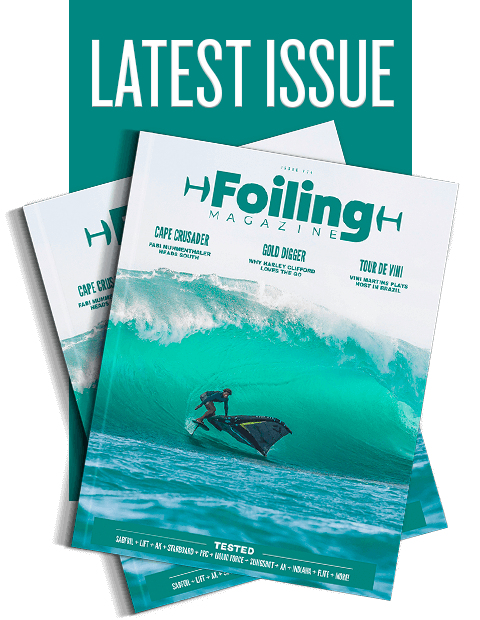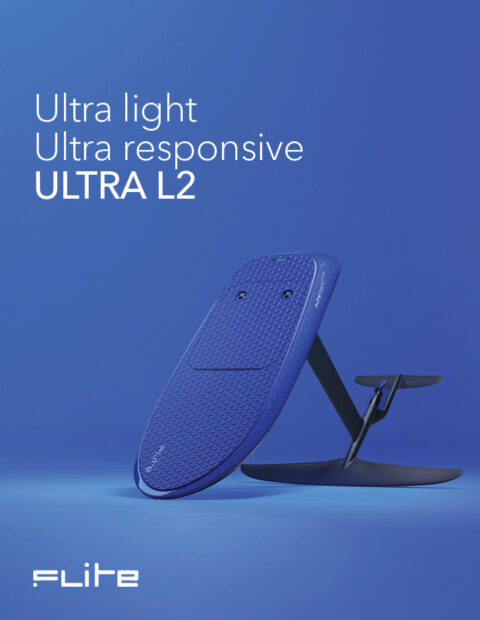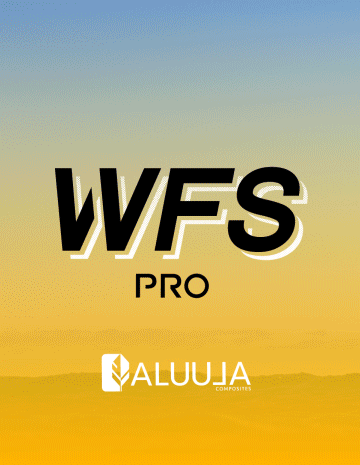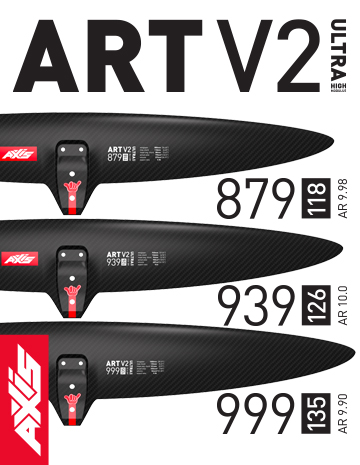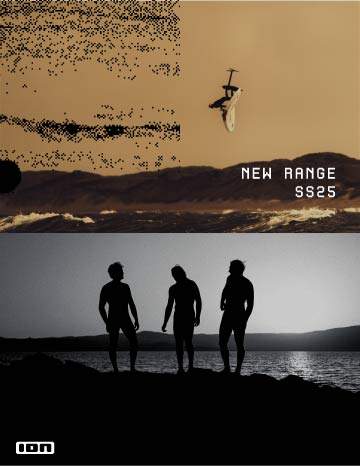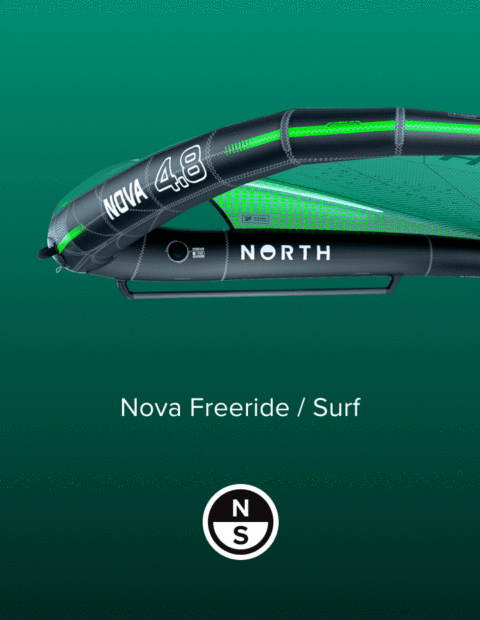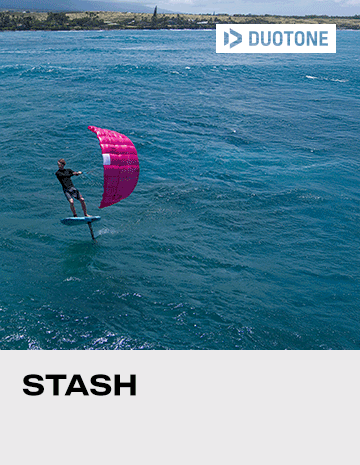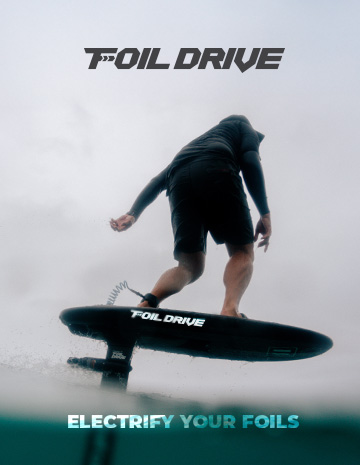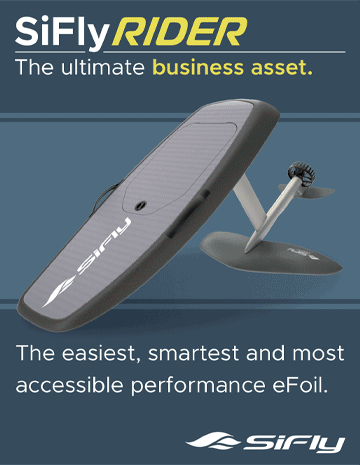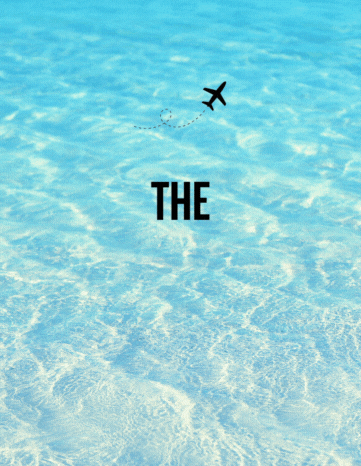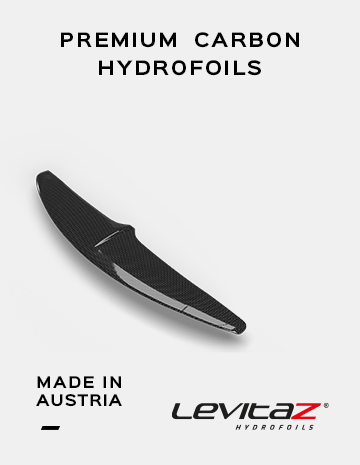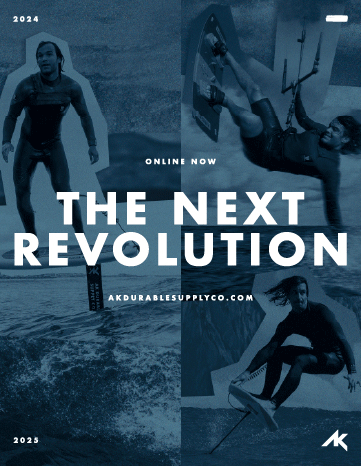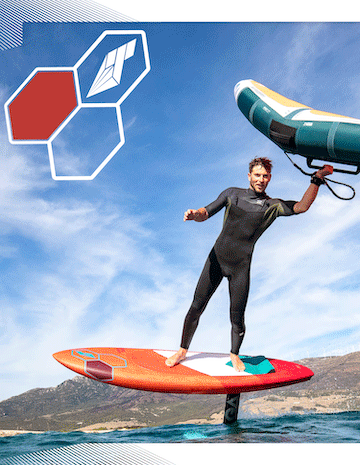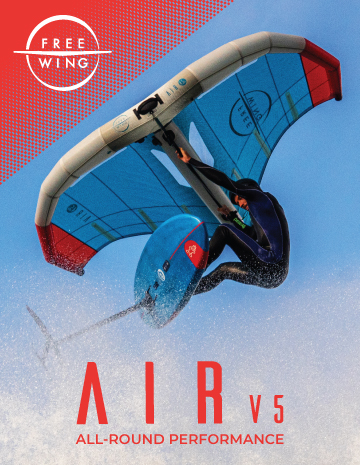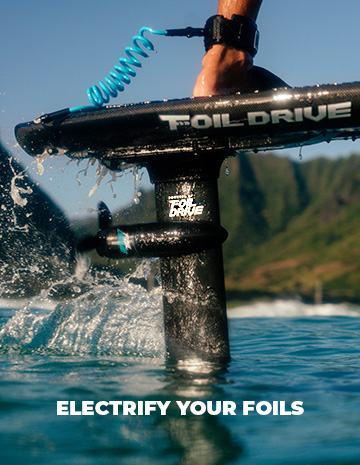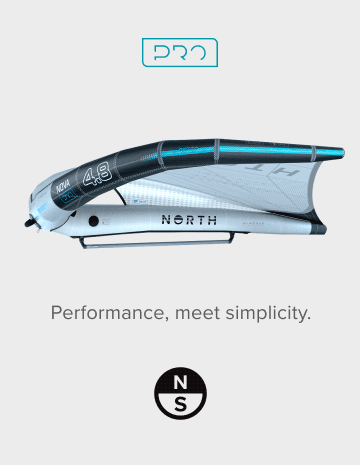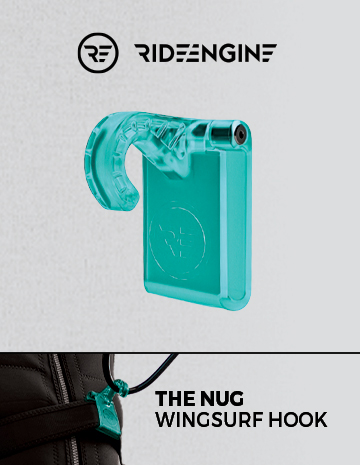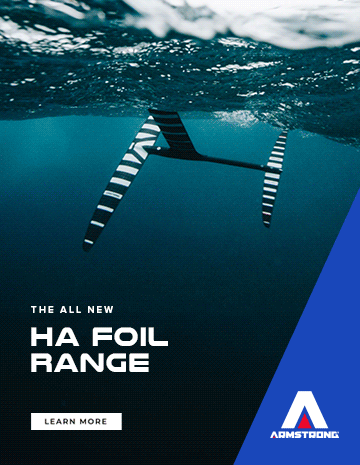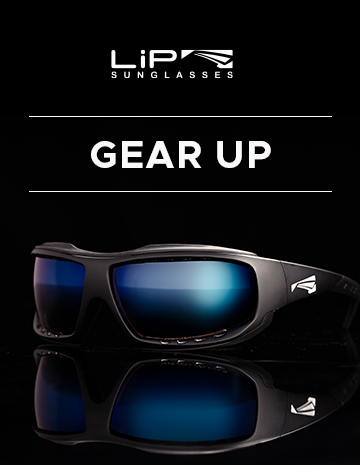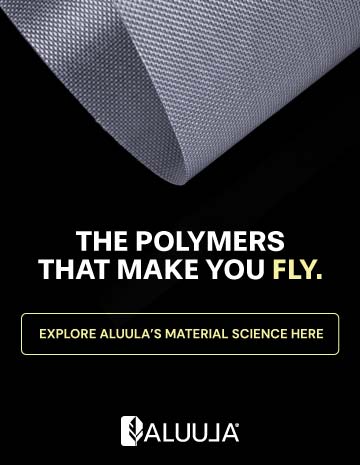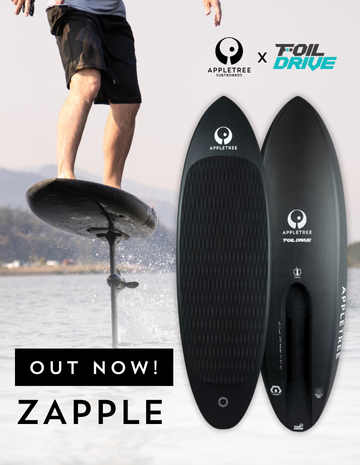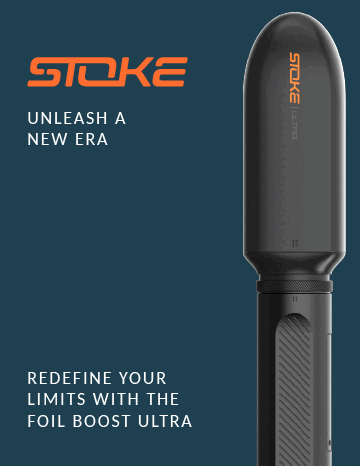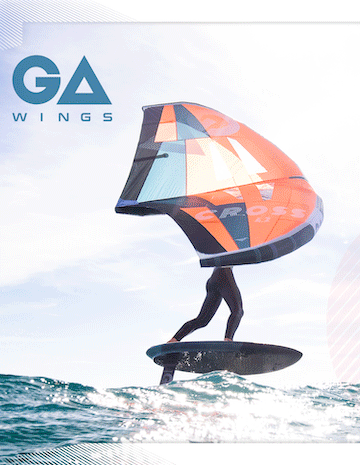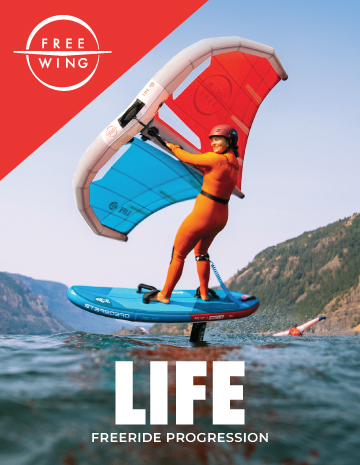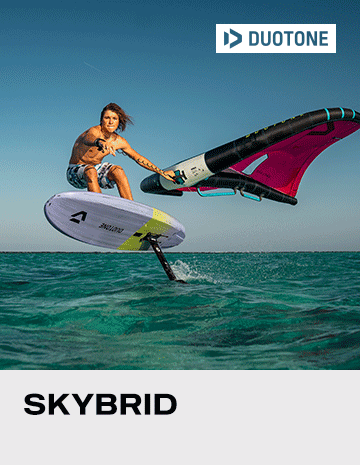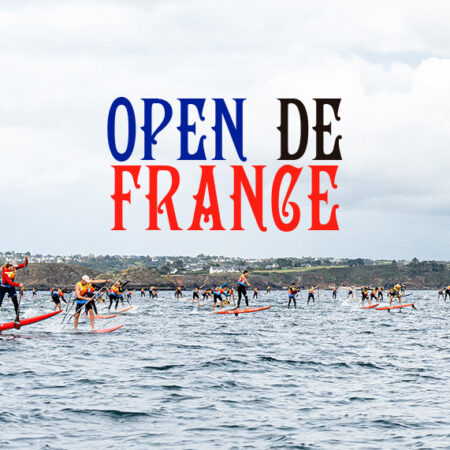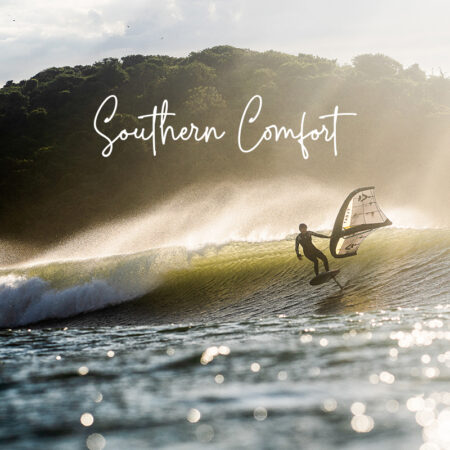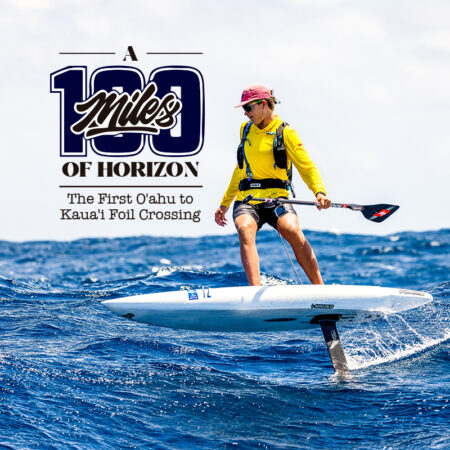The Devoted: Dr Rex F. Hawthorne
Following his accident in 2005, Dr Rex Hawthorne was back on the water within a year, scoping out any limitations to his passion for wakeboarding, but pushing forward none-the-less. In 2019, he discovered foiling – and despite the extra effort involved to make it work for him, he’s never looked back.
Photos: Shake Melenko
Dr Rex, when did you first discover a love for being in the water?
My family moved to Vernon in 1977, when I was nine years old, and my parents leased a cabin on Okanagan Lake and a small boat. My dad was a three-event water skier in his youth and passed his passion onto myself and my siblings. We spent most weekends at the cabin being dragged behind the boat. My dad, brother and I enjoyed trick skiing most. When I was 13 I skied in the British Columbia Summer Games, a provincial-level competition, and I took my gold in tricks which further fueled my passion. Growing up, my dad, brother, and I spent countless hours on the water every summer and traveled around doing local and provincial-level competitions. My dad competed in tricks at a national level well into his sixties, often placing in the top three and sometimes taking first place. I continued water skiing into the early 90s when we bought our first skurfer, beginning my transition to wakeboarding. I bought my first kite in 2000 after a trip to Maui and was hooked! It took wakeboarding to the next level. I did a lot of wakeboarding right up to the time of my accident.
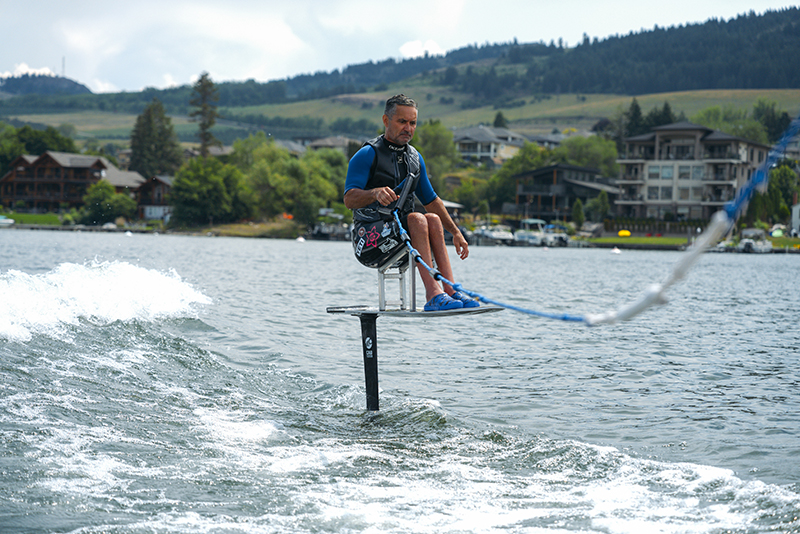
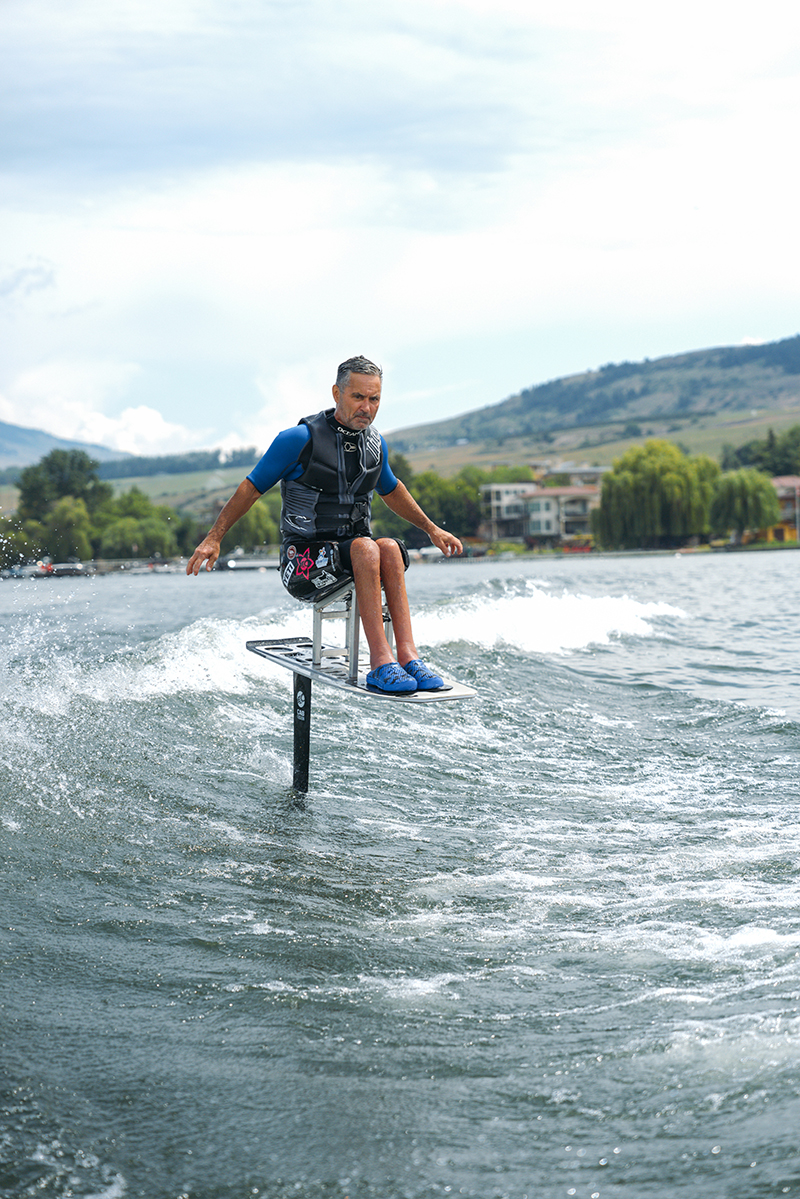
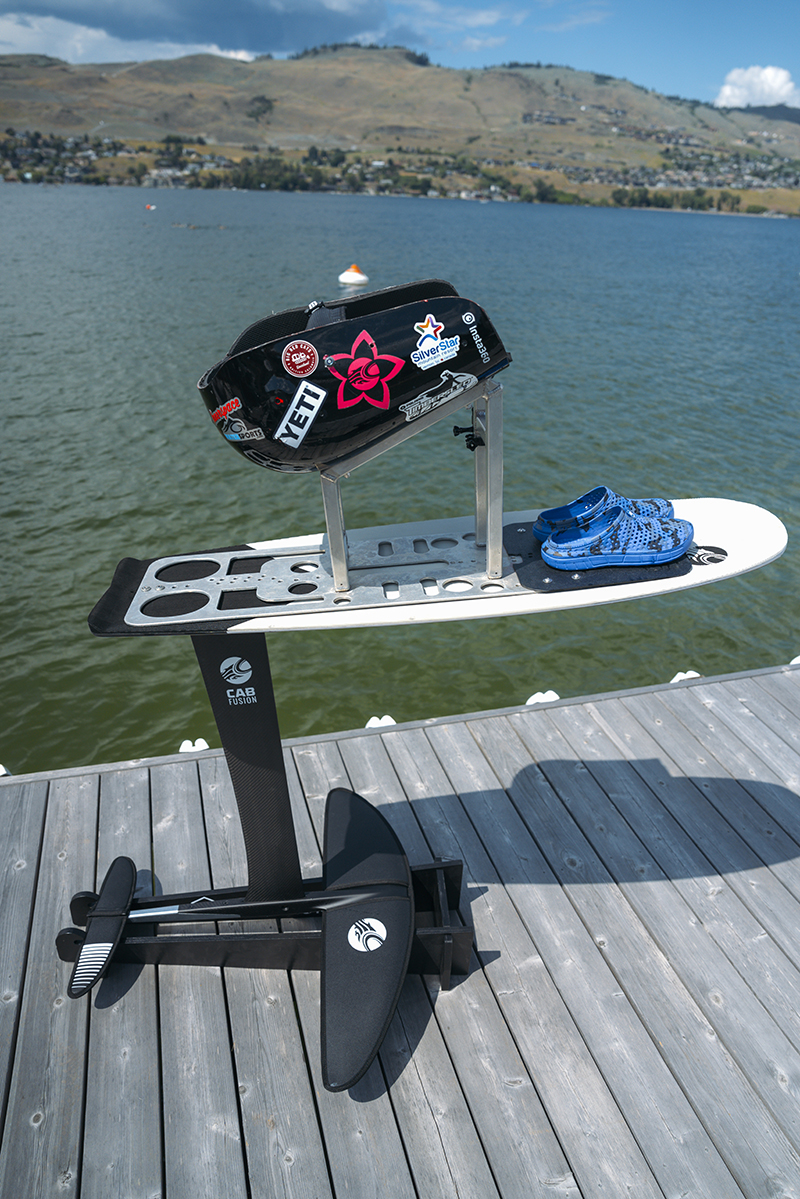
Was it pretty all-consuming at the time?
I wouldn’t say so. Where we live, we have amazing summers… and winters. I would spend many hours on the water in the summer with my family and friends, and in winter we transitioned to the ski hill. That being said, after starting to kite, I would take at least a couple of trips a year during the colder months to kite, spending time in Maui, La Ventana, Corpus Christi and South Padre Island. I played as much as my commitments allowed. Being a husband, father and business owner, these all take time.
I believe you were training to be a dentist too alongside this developing passion for being in the water. How did you balance the water time with your nascent dental career?
To be honest, I never really thought of it; I just made time. I began dental school in 1991 and graduated in 1995. During that time, over the summers, I would return home and be on the water as much as I could around my work schedule. I continued to compete with my dad and brother. After graduating, I moved back to Vernon and began my career. I was self-employed and was at liberty to schedule time off when I wanted, which made it easy to spend time kiting in the winters.
Tell us about the accident in 2005. It must have taken a lot of determination to come back from that and into water sports…
I was mountain biking at our local ski hill in August 2005. It was the last run of the day. I rode an elevated feature, with a steep down ramp. I had too much speed and went over the bars. I ended up landing on the bottom of the down ramp on my back end with enough force to pop out my T12 vertebrae, taking my spinal cord with it, what they refer to as a burst fracture. I was knocked out. When I came to, I was unable to move my legs. For lack of a better way to describe it, my life was turned upside down. I was airlifted to Vancouver, BC, where the surgery was done the next day. I spent 10 days in the spinal ward at Vancouver General and was then transferred to GF Strong for my rehab. I spent the next 10 weeks learning to live without the use of my legs out of a wheelchair. I returned home in November and started snow skiing that winter.
My dad was instrumental in getting me back out on the water. At that time, there was very little I could find commercially available, so we started designing various adaptive devices (what I refer to as my bucket) that I could fasten to my wakeboards. It was a bit of trial and error, making modifications or starting from scratch. The summer following my accident, I wakeboarded for the first time. My main motivating factor was my passion for being on the water and sharing that passion with my kids. I did make a trip back to Texas in the early days after my accident to give kiting a go, maybe 12-13 years ago. My kids made a video, which was posted on YouTube; search paraplegic kiteboarding. It was fun, but I didn’t feel comfortable and was frustrated with my lack of ability and feelings of what I lost and could no longer do.
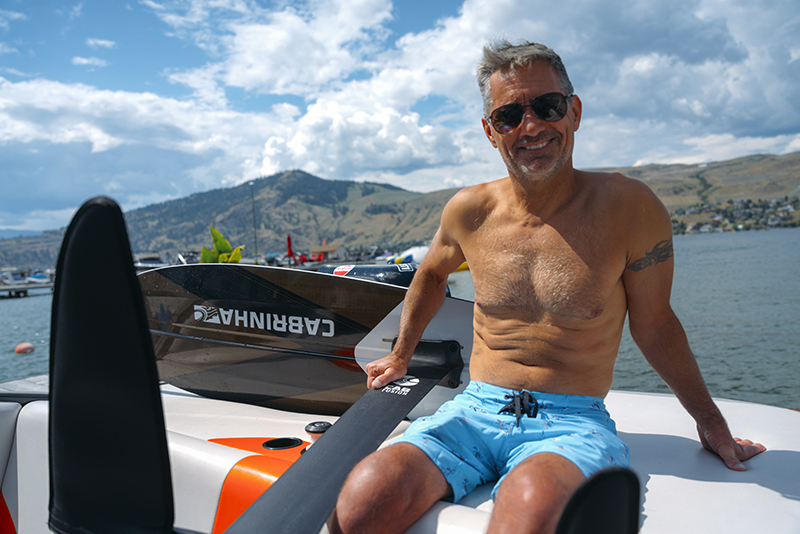
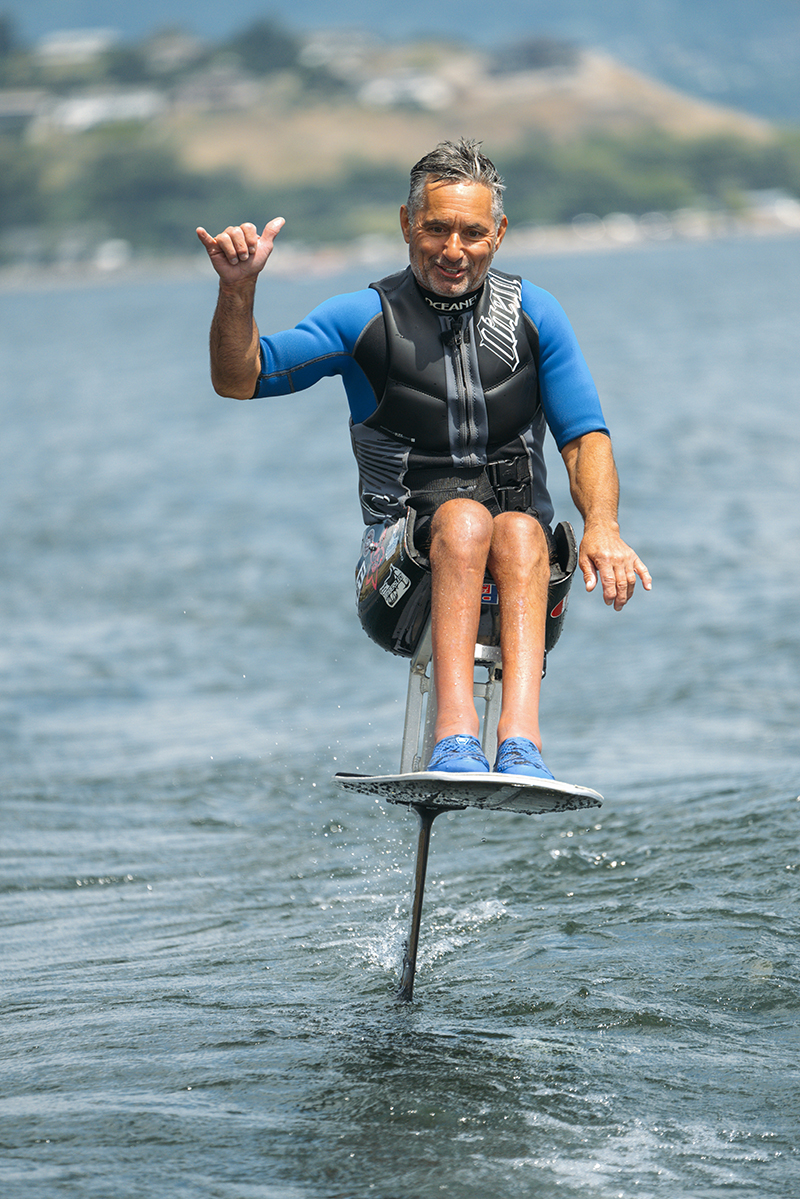
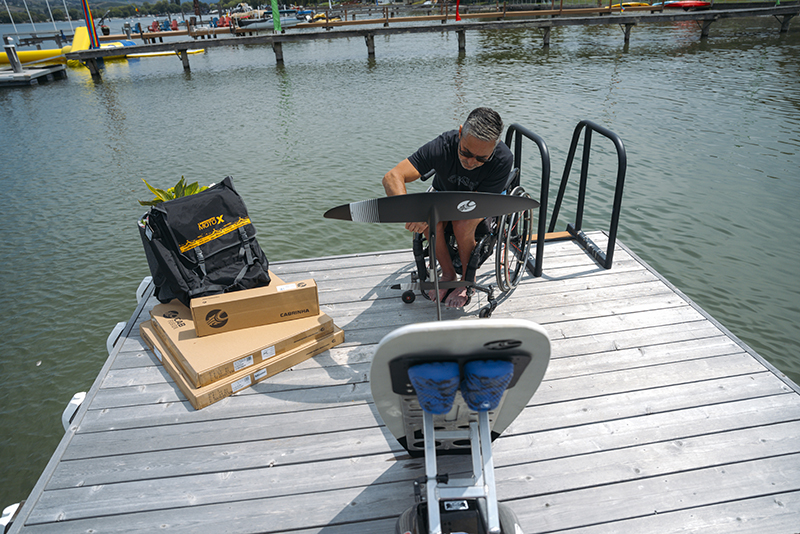
We understand you even began competing professionally in wakeboarding after that?!
Ha, I don’t know I would say that. My son really took a liking to wakeboarding, and as his skills developed, he began competing. We spent many weekends, as I did with my father and brother, traveling to competitions. Ultimately he qualified for Worlds in Toronto in 2017. He suggested that we compete together and reached out to the organizers. They qualified me, I feel, because there are not a lot of disabled athletes competing. Regardless, it was an amazing opportunity to compete with my son. I was lucky to take the win in my division. Worlds was my first and last competition. After that, I stopped wakeboarding as it was too hard on my body. I cracked my heel bone at Worlds, and previously had broken my femur and received 15 stitches after splitting my upper and lower lip attempting a backside roll.
So when did you first discover foiling, how did that come about?
In 2019, at a boat show, I saw a foil for the first time and thought it looked cool. My son picked it up right away, and it looked like fun. It was definitely not love at first foil, it was far more of a challenge than I expected. I tried lying on the board as well as just sitting on top of the board but was not even close. The following winter, I did some reading and bought a new front wing, the Infinity 76 and modified the bucket that I used to surf such that I could attach it to my board. It took the better part of the following summer just to get out of the water. The board was too buoyant and floated me upside down. I tried starting off the swim grid as I did with my surfboard, but the prop wash would play havoc with the foil as I was coming out of the water. Ultimately if the boat driver idled slowly, I could use the surf rope to keep my head out of the water until I was ready to start. It was all about timing, but I did manage to get up and ride with the rope for short periods.
That winter, it was back to the drawing board. I found an old 125 cm Lightwave Dave board I used to use for kiting and drilled a hole in it to hold the mast too. I also mounted my wakeboard bucket to that board. I added to my quiver the Slingshot Infinity 84 and the F-pump Quantum 100 foil. The next summer, all my hard work paid off, I was able to start behind the boat, as the board was not very buoyant, and I could push it under the water to deep water start. I was also able to get up and ride without the rope. Toward the end of that season, I tried a friend’s Cabrinha X1900 and 1600 with a carbon mast. I built a new lighter bucket too. Between the two changes, my riding again progressed. With some help from Cabrinha, I started this season with the new X1240 on the new stiffer 74cm carbon mast mounted to their Special Agent 125 cm board. It has been a great season with a number of firsts.
Did you have any mentors throughout the process of learning?
I started foiling early on, and consequently, there were not a lot of people doing it to learn from. We were all learning together, which was fun, and it felt good to be part of something versus having someone help me with something. As well, I have not seen any paraplegics thus far foiling behind the boat, so I was unable to learn about their experiences. I did get a lot of support and ideas from my brother Mark, older son Reece, and a few of my closer foiling buddies, Shane, Mark and Bill. When I was in South Padre Island this spring, the Cabrinha rep Rob was a huge help, along with Shane and my brother getting me back out kiteboarding.
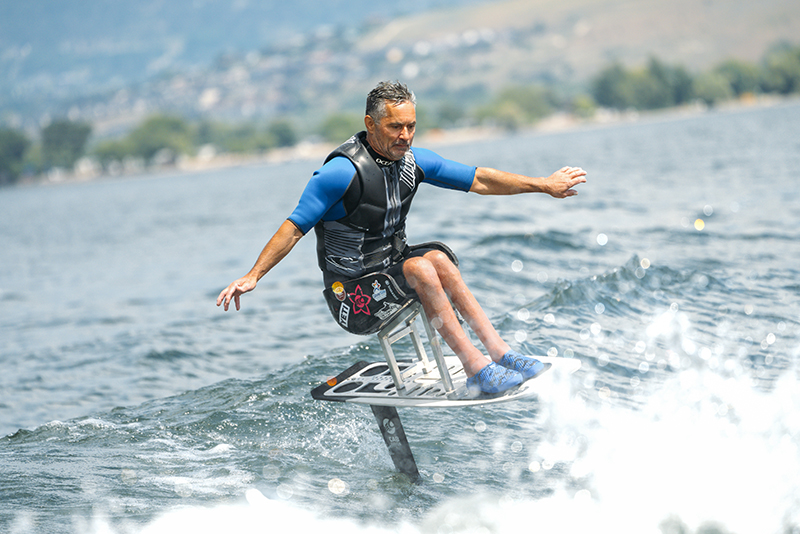
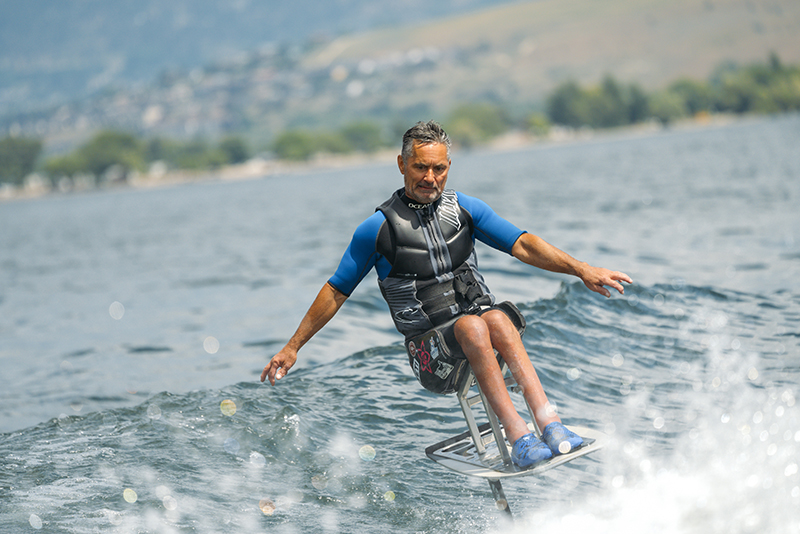
In terms of foiling, are there any specific goals you’ve yet to achieve, and is there anywhere in particular on your radar that you want to visit?
Lots. This summer, I dialed in, crossing the first wake behind the boat from both sides. I would like to get my transfers from the second wake more consistent. The biggest challenge at this time seems to be my ability to pump. I’m weak. I am also hoping to kite with a foil next spring. I’d also love to try foiling in the swell; getting towed in by a Seadoo. I have been doing a little reading on areas where I might be able to do this, again South Padre Island being one.
Finally, foil technology seems to be improving all the time. Is there an area in particular that you would like to see develop further?
Hmm, you don’t know what you don’t know. I have been super stoked about the improvements I’ve seen thus far, they have really helped me with my foiling and the progression I’ve had. One of the challenges is trying new gear, you pretty much have to buy it to try it. Now that more and more of my friends are getting into it, that is changing. For me, I like a lively, playful foil that turns well, yet is stable, with a lot of glide. I prefer a medium aspect ratio foil overall behind the boat, but I really enjoyed the efficiency and pumpability of the high-aspect wings. It would be cool if I could get the efficiency of a high-aspect ratio foil with the stability and playfulness of a medium-aspect foil. Lastly, but this is an area that I will be working on this winter, is the connection between my body (read ass) and the foil. I plan on playing with some different materials to see if I can custom-fit my bucket to my body, allowing me to control the foil better; the difference between ill-fitting ski boots versus custom-fit ones.



































